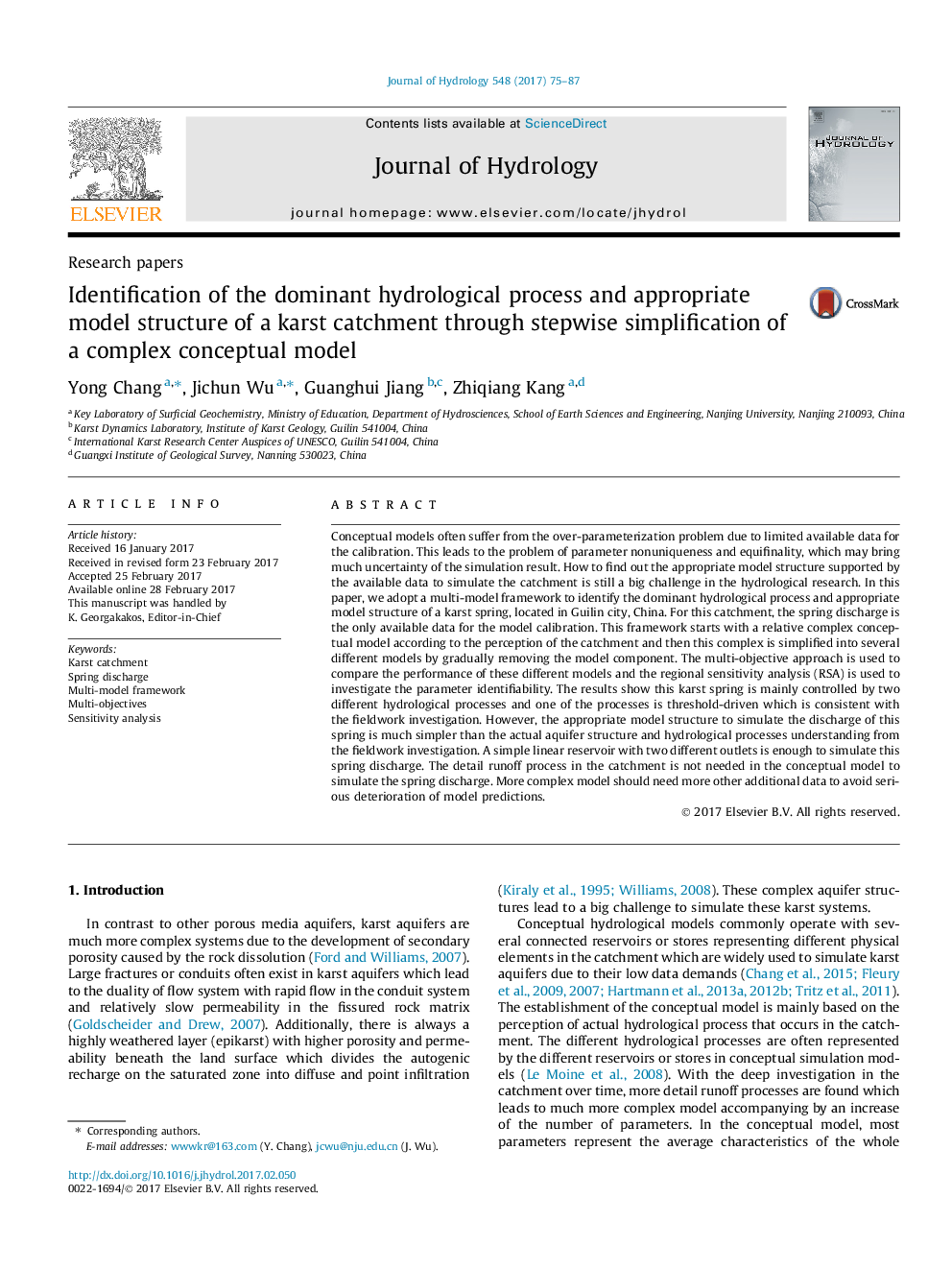| کد مقاله | کد نشریه | سال انتشار | مقاله انگلیسی | نسخه تمام متن |
|---|---|---|---|---|
| 5771213 | 1629906 | 2017 | 13 صفحه PDF | دانلود رایگان |
- The multi-model framework is used to identify the appropriate model structure of a karst spring.
- Multi-objective optimization technique is used to compare the performances of different models.
- A regional sensitivity analysis (RSA) is used to investigate the parameter identifiability.
- The karst spring is mainly controlled by two different hydrological processes and one of the processes is threshold-driven.
- A simple linear reservoir with two different outlets is enough to simulate the spring discharge.
Conceptual models often suffer from the over-parameterization problem due to limited available data for the calibration. This leads to the problem of parameter nonuniqueness and equifinality, which may bring much uncertainty of the simulation result. How to find out the appropriate model structure supported by the available data to simulate the catchment is still a big challenge in the hydrological research. In this paper, we adopt a multi-model framework to identify the dominant hydrological process and appropriate model structure of a karst spring, located in Guilin city, China. For this catchment, the spring discharge is the only available data for the model calibration. This framework starts with a relative complex conceptual model according to the perception of the catchment and then this complex is simplified into several different models by gradually removing the model component. The multi-objective approach is used to compare the performance of these different models and the regional sensitivity analysis (RSA) is used to investigate the parameter identifiability. The results show this karst spring is mainly controlled by two different hydrological processes and one of the processes is threshold-driven which is consistent with the fieldwork investigation. However, the appropriate model structure to simulate the discharge of this spring is much simpler than the actual aquifer structure and hydrological processes understanding from the fieldwork investigation. A simple linear reservoir with two different outlets is enough to simulate this spring discharge. The detail runoff process in the catchment is not needed in the conceptual model to simulate the spring discharge. More complex model should need more other additional data to avoid serious deterioration of model predictions.
Journal: Journal of Hydrology - Volume 548, May 2017, Pages 75-87
